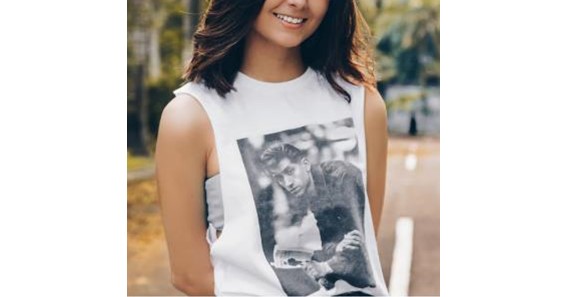Since humans first put animal fur on their backs, a sense of individuality has taken root in our minds. This sense became the fashion, in the age where we made clothes from plant strands or animal hide, fur, and silk. People would create their looks with the red damask of royalties to custom suits and gowns.
In the present times, where casual fashion is king, a custom suit or a gown seems overdressed and out of style. Though most brands have a unique look, many want that signature style and expression. This is where custom t shirts come in, as a one-of-a-kind piece, either DIY or custom-made. Below are some ways to make a custom shirt to add to your wardrobe.
click here – How to Prove Negligence in Personal Injury?
Printing
This is when you put or print your design or logo onto a garment, in this case, a t-shirt. These techniques have some pros and cons that you need to know.
-
Screenprinting
Screen printing is one of the most popular methods of t-shirt printing. Also known as silk screen printing, this process uses silkscreen to anchor a stencil of a design. It’s excellent for mass-producing a simple design for events and corporate gatherings.
This method works well with shirts and paints in solid colors. The stencil is reusable and recommended for single-color design and mass production. This method is not for multi-colored designs, and will lead to a big waste for single use.
It is much cheaper if done in big bulk rather than a few pieces. So you can print a design in many colors for shirts and paints.
-
Heat Transfer Printing Techniques
For a much more detailed and multi-colored design, heat transfer is a cheap printing method. Unlike silkscreens, the medium or heat transfer method is for individual use. It works by transferring a design by heat. There are multiple methods of heat transfer printing you can choose from.
click here – What Are Custom Mailer Boxes, And What Do They Do To Increase Brand Awareness?
-
Plastisol Transfers
Using plastisol transfer paper, you can make detailed logos or images on your shirt. First, inkjet the image to the transfer paper. Then transfer the design on the garment by heat.
-
Heat Transfer Vinyl
It is commonly used for sports jerseys because it’s durable and lasts longer; heat transfer vinyl also has excellent detail. A machine prints the vinyl design that is then heat pressed to the shirt to make a much detailed and durable custom shirt.
-
Dye Sublimation
Another method is dye sublimation printing. A special ink dye enables this method. It sublimates the print, then transfers it onto the garment in its solid state. Unlike the previous two, this technique penetrates the fabric; hence it is like a dyeing method.
Heat transfer methods have its pros and cons. The pro is that the design is very detailed and more durable than silk screens. But since heat is involved, some fabric flexibility is compromised on the printed area. Also, it is prone to crack and tear.
-
DTG Printing
This method requires several pieces of equipment. Investing in them is rewarding if you are starting a t-shirt printing business. You can do this at home, but you need the skills to operate the equipment.
Dyeing and Bleaching
You can use dyes and bleaches to make a unique t-shirt with unique methods available for you to try.
-
Tie-dye
What is more summery and retro than tye-dye shirts? Twist, roll or fold your white garment, then tie them with rubber bands. Then add colored prints with one dye or several ones for an excellent effect. Some parts of the t-shirt will be dyed more than others creating a unique pattern.
It all depends on the technique or how you fold the t-shirt and what pattern will show. Remember, this is a messy process. So keep away from parts of the house you don’t want stains and use clothes that are ok to be stained. Tie-dye kits are available online and in some hobby shops.
-
Bleaching
The opposite but similar method is bleaching. If dyeing adds color to a garment, bleaching is taking the color away. But with stencils and heat to dry the garment, you can use this technique to make cool shirts.
Twist, fold and roll the shirt for a unique pattern using tie-dye. With layering, the bleaching process will leave an exciting contrast. Use small pebbles for a stonewash vibe. Bundle your shirt and use a spray or squeeze bottle for different effects. Reminder bleach is a very irritating substance, so you’d better prepare a respirator mask and goggles when handling it.
Spray Painting
Create printings with spray can or airbrush for more details. T-shirts printed with these methods are as customizable as it can be. This method requires more skills than equipment. But if you have both, this is an excellent business to profit from.
Customize Your T-Shirt
Now you know there are several methods of designing your custom shirts. Are you searching for the right tees for your custom shirt design? Printailor will assist you with global delivery and local support. Sign up on its website and place your first order today!









